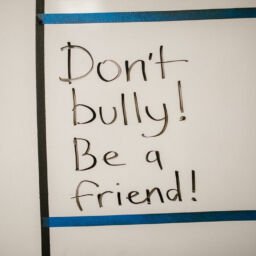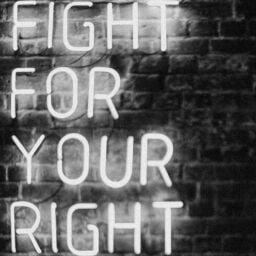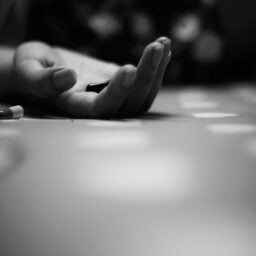Introduction
Juvenile delinquency, often known as juvenile offences, refers to illegal or rebellious activity by a child under the age of 16 for boys and 18 for girls. If a grown-up had done the same thing, it would have been a crime. Section 2 clause (h) of the Juvenile Justice Act of 1986 distinguishes the term juvenile.[1] The term delinquent is defined under Section 2 clause (e) of the Juvenile Justice Act of 1986. Juvenile delinquency is a gateway to adult misconduct, causing serious concerns around the world because many criminal occupations have their beginnings in youth.[2] The intricacy grows as we compare the statistics data of developed and emerging countries. In 1978, 44284 minor offences were committed, up 0.6% from 1977. Statistics show that for every one adult, there are 10.2 juvenile criminals.[3] Burglary and robbery cover a significant proportion of these wrongdoings. Murder, dacoity, rape, burglary, and kidnapping are juvenile crimes.
Literature Review
In India, the History and Evolution of Juvenile Delinquency:-
- Apprentices Act (1850)
The first legislation, which dealt with minors who had broken the law, was passed during the colonial period. Instead of being sent to prison, minors who commit crimes are handled like apprentices (a person who receives a form of course training) under the Apprentices Act of 1850.
- Juvenile Justice Act, 1986
This was the first important statute on juvenile justice that established a unified approach. Delinquent juveniles are maintained, defended, treated, developed, and rehabilitated under this statute.[4]
- Juvenile Justice (Care and Protection of Children) Act, 2000:
The Juvenile Justice Act of 1986 compels execution due to a lack of national agreement. The Indian government re-enacted the Juvenile Justice (Care and Protection of Children) Act, 2000, which has been in effect since April 1, 2001, to ensure that adolescents are treated properly.[5]
- Juvenile Justice (Care and Protection of Children) Act, 2014:
The new Adolescent Justice (Care and Protection of Children) Act, 2014 has been ratified to replace the current Adolescent Justice (Care and Protection of Children) Act, 2000, which dealt with adolescent misbehaviour in India. This bill will create a Juvenile Justice Board, which will help determine the age of juvenile criminals and whether or not they are mentally mature.[6]
Causes of Juvenile delinquency
Rational Choice:
According to a study conducted by psychologists on delinquent youngsters, the child commits any illegal act because his mind tells him to and he wants to. Furthermore, they see no harm in committing these crimes because they provide joy to the perpetrators.[7]
Labelling:
Calling someone a failure may push that person towards doing wrongful acts. This is the theory of our society; when we see or hear someone’s involvement in a crime, we label him as a criminal. And such language becomes proof of identity marks for these entities, and they hardly attempt to escape this crime world.[8] Treatment from the stepmother, poverty, harmful effect of television or other media may result in a lousy mindset. It is also observed that most cases seen are due to neglected or isolated children, children who do not have anyone to look after them.[9]
Neighbourhood:
The neighbourhood is the part of the social order that has the most impact on an individual’s actions. It also scripts a person’s ability to deal with delinquent behaviour. When a child sees someone doing something new, he strives to do it himself. If they know a gambler, quarrelling couples, or drunkards in his area, he will fall into these traps and eventually become a criminal. We sometimes appoint caregivers for our children, and who knows whether or not they are the best fit for them. Grandparents, relatives, teachers, and acquaintances have all been known to have a role in the participation of youngsters in criminal activity.[10] Sometimes we assign caretakers for our children, and who knows whether they are ideal for them or not. Sometimes grandparents, relatives, teachers, and friends became the primary cause for the involvement of children in crimes.[11]
Most common Juvenile crimes
Larceny (stealing):
The most common Juvenile crime is larceny, also known as stealing. These criminals steal things that are easily disposable, hidden, and typically inexpensive; that’s why these acts go unsuspected and unreported. As a result, theft becomes the most common Juvenile crime.[12]
Assault:
Initial Juvenile offenders can be seen as bullies at school. The bullying may include physical violence, emotional abuse, or taunting. Sometimes, these types of children are depressed and have short-tempered issues, which results in fighting and violence, leading to crimes and offends.[13]
Illegal Purchases:
The age of teenagers is so sensitive that they indulge in any activity so easily, they get convinced quickly, and accordingly, they try to buy illegal things that are cigarettes and alcohol. They promptly get involved with drugs in other situations, and drug distributors and gangs target this weakness. And through these, adolescents may become addicted to drugs and addictive products. Many states have zero-tolerance laws in which any amount of alcohol is considered legally impaired.[14]
Sexual Offenses:
Sexual Offenses committed by teens are a part of Juvenile Offences. In some cases, they are sexually abused, and in other cases, they harm others. And this results in child pornography, where they are forced to send their pornographic pictures or others to send theirs. And due to which they commit rape or sexual assault, and they get involved in sex trafficking or prostitution.[15] Teens commit acts of vandalism either by themselves or with the help of others. They led to extensive destruction of buildings, homes, or other property.[16]
Consequences of Juvenile crimes
Juvenile delinquency is a serious issue that threatens victims, individuals, knowledge, families, and society. Whether the loss is stolen, vandalised, or violent, victims always lament it. Wages, health, and psychiatric care are all paid for by the victims.[17] Drug usage, sexual conduct, and involvement in abusive gangsters are all linked to juvenile delinquency. Juvenile Justice (Child Care and Protection) Act, 2015. Juvenile Justice (Child Care and Protection) Act, 2015. The Child Care and Protection Amendment Act of 2021 will amend this.[18] You can help your child’s brain develop by supplying and developing minimal service requirements for various communities and formal institutions under the Juvenile Court Act.[19]
Conclusion
In recent years, the govt and society are concerned, and that they are giving attention to the youngsters. But handling such a sensitive matter isn’t easy; instead, the issues become huger and more never-ending and thus result in a lack of the entire thing. The country’s future depends upon the expansion of the youngsters of that specific country.[20] If these problems aren’t curbed easily, our country’s children’s development is hindered, giving a dark future. to realize the fruitful result, we’ve to implement the amendments in such a fashion that it helps the youngsters.[21]
We’ve to affect the social, economic, and other factors at the initial stage that has been the basis causes of delinquency. Within the Gopinath Ghosh v. State of West Bengal, the suspects had assumed his age as prescribed for being a toddler.[22] However, the court not only permissible the appeal of kid plea of kid position to be elevated for the primary time but also mentioned the interest the sessions judge for a purpose of the age of the suspect.[23] Complimentary this method, the Supreme Court in Rajinder Chandra v. the State of Chhattisgarh, additionally placed down that the quality of proof for age willpower is that the degree of possibility and not proof out there a wise uncertainty.[24]
Author(s) Name: Charu Soni (Symbiosis International University, Pune)
References:
[1] Arnav, ‘juvenile delinquency’ (Legal Services India) <http://www.legalservicesindia.com/article/626/Juvenile-delinquency.html> accessed 2 December 2021
[2] Esha Roy, ‘Explained: What changes in JJ act for juvenile offenders and District Magistrates’ ( The Indian Express, august 2021) <https://indianexpress.com/article/explained/juvenile-justice-amendment-bill-2021-explained-7429971/> accessed on 15 December 2021
[3] Arnav, ‘juvenile delinquency’ ( legal Services India ) <http://www.legalservicesindia.com/article/626/Juvenile-delinquency.html > accessed 2 December 2021
[4] S. Aatif, ‘The juvenile Justice Care and protection of children act, 2000 and the juvenile justice care and protection of children act,2015’ ( Legal Service India) <http://www.legalservicesindia.com/article/2482/The-Juvenile-Justice-Care-and-Protection-of-Children-Act,-2000-and-The-Juvenile-Justice-Care-and-Protection-of-Children-Act,-2015.html> accessed on 16 December 2021
[5] Amandeep Kaur, ‘Juvenile delinquency and related legislations in India’ (Ipleaders, 30 May 2019) <https://blog.ipleaders.in/juvenile-delinquency-related-legislations-india/> accessed n 2 December 2021
[6] ‘The juvenile justice (care and protection of children) Bill, 2014’ (PRS) < https://prsindia.org/billtrack/the-juvenile-justice-care-and-protection-of-children-bill-2014>
[7] ‘Juvenile crime and juvenile justice’ (NAP) <https://www.nap.edu/read/9747/chapter/7> accessed on 30 November 2021
[8] Arnav, ‘Juvenile delinquency’ (Legal Service India) <http://www.legalservicesindia.com/article/626/Juvenile-delinquency.html> accessed 16 December 2021
[9] ‘Why children commit offences’ (DCPCR, June 2015) <http://www.delhiplanning.nic.in/sites/default/files/Why-Children-Commite-Sucide-Booklet.pdf> accessed on 16 December 2021
[10] ‘Juvenile delinquency : causes and effects’ ( Study Corgi, 26 February 2021) <https://studycorgi.com/juvenile-delinquency-causes-and-effects/> accessed on 30 November 2021
[11] ‘Juvenile delinquency : causes and effects’ ( Study Corgi, 26 February 2021) <https://studycorgi.com/juvenile-delinquency-causes-and-effects/> accessed on 30 November 2021
[12] ‘Most common juvenile crimes’ ( HG.org) <https://www.hg.org/legal-articles/most-common-juvenile-crimes-47362> accessed on 30 November 2021
[13] Terence P. Thornberry, Alan J. Lizotte, Marvin D. Krohn, Carolyn A. Smith, ‘Causes and consequences ofDelinquency’(ResearchGate,November2006)<https://www.researchgate.net/publication/225890292_Causes_and_Consequences_of_Delinquency> accessed on 30 November 2021
[14] ‘Smoking and tobacco and young people’ (Australian Government department of health) <https://www.health.gov.au/health-topics/smoking-and-tobacco/smoking-and-tobacco-throughout-life/smoking-and-tobacco-and-young-people> accessed on 16 December 2021
[15] ‘Juvenile crimes’ (Justia) <https://www.justia.com/criminal/offenses/other-crimes/juvenile-crimes/> accessed on 30 November 2021
[16] Mark Theoharis ‘Juvenile vandalism: laws and penalties’ ( Criminal Defence Lawyer) <https://www.criminaldefenselawyer.com/crime-penalties/juvenile/vandalism.htm> accessed on 16 December 2021
[17] ‘Juvenile Crime, Juvenile Justice (2001)’ (NAP) <https://www.nap.edu/read/9747/chapter/3> accessed on 16 December 2021
[18] ‘Causes and consequences of juvenile delinquency in India’ (Consortium for street children ) <https://www.streetchildren.org/resources/causes-and-consequences-of-juvenile-delinquency-in-india/> accessed on 30 November 2021
[19] ‘The juvenile justice ( Care and protection of children) amendment bill, 2021’ (Instapedia, 2 August 2021) <https://www.insightsonindia.com/2021/08/02/the-juvenile-justice-care-and-protection-of-children-amendment-bill-2021/> accessed on 16 December 2021
[20] ‘Most common juvenile crimes’ ( HG. Org) <https://www.hg.org/legal-articles/most-common-juvenile-crimes-47362> accessed on 16 December 2021
[21] B.B. Pande, ‘ Rethinking juvenile justice: Arnit Das Style’ (ebc-India.com) <https://www.ebc-india.com/lawyer/articles/2000v6a1.htm> accessed on 16 December 2021
[22] R.M. Lodha, ‘Abuzar Hossain @ Gulam Hossain v. State of West Bengal’ (Advocate Khoj) <https://www.advocatekhoj.com/library/judgments/announcement.php?WID=2667> accessed on 16 December 2021
[23] ‘ SCC Snippets Dishonour of cheque: principles relating to presumption under section 139 NI act’ ( SCC online) <https://www.scconline.com/blog/post/tag/supreme-court-cases/> accessed on 16 December 2021
[24] ‘Juvenile crime, Juvenile justice (2001)’ (NAP) <https://www.nap.edu/read/9747/chapter/3#17> accessed on 16 December 2021
















